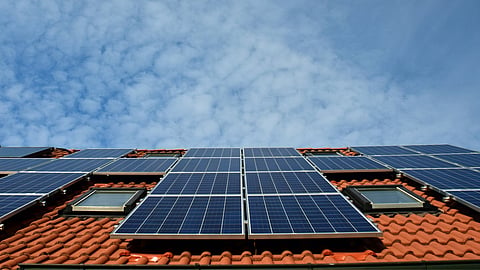How a Cape Town resident got his DIY solar setup to pay for itself in five months
Discover how a Cape Town resident, Erastus Coetzee, saved over R23,600 in just five months with a self-installed solar system costing R85,000. Coetzee's innovative approach includes purchasing discounted 5kW grid-tied inverters in 2019, combining them with various solar panels totalling 16kW, and receiving a gift of a 3,640Wh lithium-ion battery. His cost-effective system, installed in compliance with the law, has allowed him to not only recoup the initial investment quickly but also earn R10,285 for excess electricity fed back into the grid. The City of Cape Town's feed-in tariffs have proven beneficial for over 869 home users and Mayor Geordin Hill-Lewis sees it as a win-win, adding kilowatts to the grid at a lower cost and putting money back in the pockets of Capetonians.
Sign up for your early morning brew of the BizNews Insider to keep you up to speed with the content that matters. The newsletter will land in your inbox at 5:30am weekdays. Register here.
A Cape Town resident has saved over R23,600 in about five months with a self-installed solar system that cost him around R85,000.
MyBroadband reader Erastus Coetzee recently contacted us and provided detailed electricity consumption figures and City of Cape Town bill amounts.
He asserted that it was possible to get a much more affordable solar and backup power system than commonly advertised and make thousands of rand from it to recoup the initial investment cost quickly, at least in Cape Town.
While feed-in mechanisms are also supported for Eskom Direct customers and in other municipalities, the City of Cape Town is the only authority that will pay residents and businesses back if their fed-in electricity passes consumption, whereas other authorities only give users electricity credits.
Coetzee said the total capital cost of his solar system at his home in Melkbos was R73,300, while the bidirectional meter and relevant municipal approvals took the total price to R85,000.
From the start of October 2023 to the end of February 2024, he has been paid R10,285 for the excess electricity fed back into the grid.
This amount does not include the roughly R2,500—R3,000 he saves in electricity costs every month, which have added up to over R13,000.
Coetzee joked that Eskom or the city was effectively buying new panels and inverters for him to stop consuming their electricity.
At the current rate, he might recoup the system's total cost in less than two years.
This piqued MyBroadband's interest, as the time in which electricity savings make up for the cost of a solar power system is typically well over six or seven years.
Coetzee subsequently explained how he managed to assemble such a cost-effective system, which was through a combination of smarts and good fortune.
"Nobody wanted to buy the 5kW grid-tied inverters because of the nonsense people are talking," he said, referring to some Cape Town residents' paranoia that the city wanted to have more control over their consumption habits.
"I bought them in 2019 from a company whose owner passed away, and because no one was interested in them, I got them for a better price of R5,000 each."
In addition to these inverters, he paid R8,900 for a new Solis 3.6kW inverter and R6,400 for a smaller unspecified 2.3kW inverter.
The key to his substantial savings is a monumental 32 solar panels with varying capacities that can generate over 16kW of peak power combined.
Coetzee also has a small inverter and 3,640Wh lithium-ion battery, which he received as gifts.
However, he does not regard these to be part of the system as they are used separately for powering a PC, TVs, and lights during load-shedding.
The table below shows the components in Coetzee's power backup system and how much he paid for them.
| Erastus Coetzee's home solar power system | ||
| Component | Number of units and capacity | Price |
| Solar panels | 5 x 540W | R10,500 |
| 10 x 420W | R13,500 | |
| 15 x 330W | R24,000 | |
| Inverters | 2 x 5kW grid-tied inverters | R10,000 |
| 1 x 3.6kW grid-tied inverter | R8,900 | |
| 1 x 2.3kW inverter | R6,400 | |
| Batteries | 1 x 3,640Wh LiFePO4 | Gifted but not used for feed-in |
| Total capital cost | R73,300 | |
Coetzee did the installation himself and said he did not buy "fancy stuff" as he believed it would have been a waste of money.
However, although the system is basic, he said it complied with the law.
Coetzee is one of 869 home users benefitting from the City of Cape Town's feed-in tariffs and incentive scheme.
Between 1 July 2022 and 1 February 2024, the metro paid out R25.8 million to these users and a further 592 commercial and industrial customers feeding power back into the city's grid.
Mayor Geordin Hill-Lewis considers this as money well spent.
"Not only are we adding crucial kilowatts to our grid at a cheaper cost than Eskom's supply, we are also putting money back in the pockets of Capetonians," he said.
"That is how you democratise energy and truly put power in the hands of the people."
Read also:
This article was first published by My Broadband and is republished with permission

